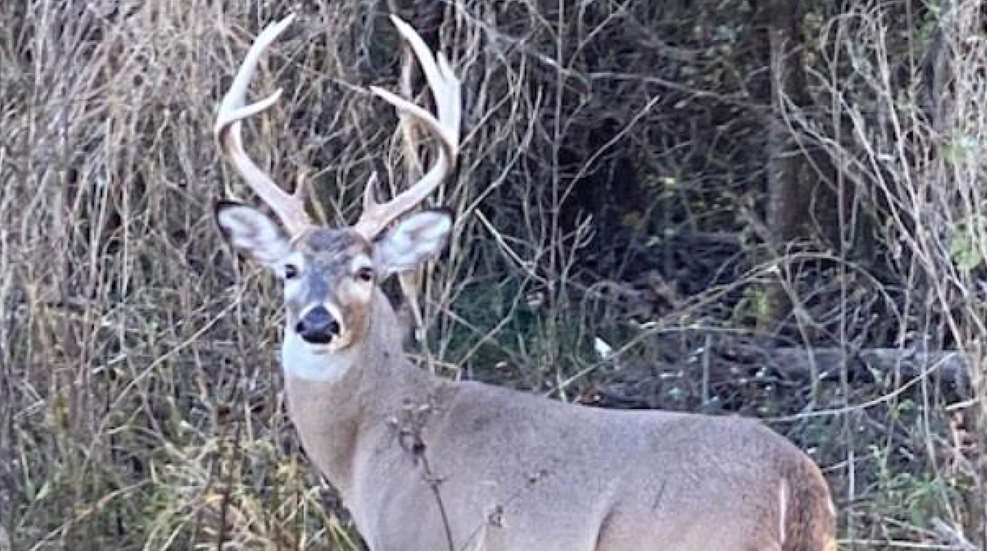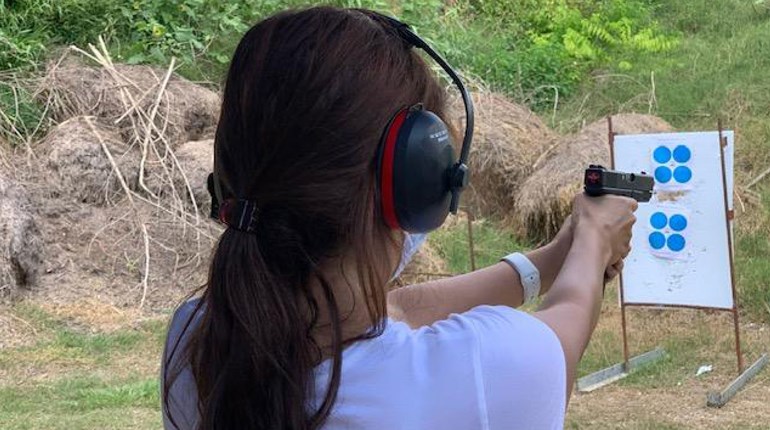
Many hunting topics spark animated discussions, like opinions on the best all-round hunting caliber; when hunting seasons should open or close; and how many deer should be allowed to be harvested. There is one topic, though, that can get very heated: the implementation of “antler restrictions.”
Antler restrictions are state laws regarding antler characteristics of antlered game such as whitetail deer, mule deer and elk. Some antler restrictions require a minimum antler point count, minimum outside or inside antler spread, brow tine lengths, spikes and “basket racks” to name a few. These restrictions can range from very simple to very complex. It is very important to understand these laws if they are implemented in the area in which you will be hunting. Violating antler restriction laws can result in fines, restitution and loss of hunting privileges.
Most antler restrictions are focused on number of points or spread. Some common antler spread restrictions such as a 10-inch inside spread, 12-inch inside spread, 13-inch inside spread, or 15-inch outside spread. The problem is that very few deer are going to let you exit your blind, walk up to the deer, measure their spread, return to your blind, and proceed to shoot. Because of this, there must be something that you must use as a reference while you are assessing if the animal you are looking at is legal to take.
Two common features to use as reference on antlered animals are the ears and the nose. For example, in Texas the whitetail deer and mule deer in antlered restricted counties use the animal’s ears. In these counties, whitetail deer must have an inside spread of at least 13 inches and mule deer must have an outside spread of at least 20 inches. To gauge these spreads, the hunter relies on the deer’s ears. The average distance between the tips of a whitetails ears is 13 inches and the average distance between the tips of a mule deer is 20 inches.

Another example is Colorado’s antler restrictions on elk. A legal elk in these counties must have at least 4 4 points on one antler or a brow tine of at least 5 inches long. The points are easy to count. A point is considered any projection of at least 1 inch long and longer than its base. It is as simple as counting the points. It is harder to meet the restriction of a brow tine at least 5 inches long because you must make a calculated guess. To do this, you must compare the length of the tine to the distance between the antler burr and the tip of the animal’s nose. The average distance between the burr of the antler and the tip of the elk’s nose is about 15½ inches. A curved brow tine that looks as if it could touch the nose is about 18 inches in length. From these known distances, the hunter must decide if the animal they are looking at is legal.
The rationale behind antler restrictions is to protect young animals to give them a chance to grow into adulthood. This way the young antlered animals have a chance to reach their full potential and give them a chance to breed at least once to pass on their genes. For this management technique to work, there must be additional exceptions or provisions in the law to better the deer herd while at the same time allowing for the removal of animals with inferior genes.
The best example of this is the antler restrictions in Texas regarding whitetail deer. In Texas these are referred to as antler-restricted counties. Again, whitetail deer must have an inside spread of at least 13 inches. This is done by comparing the inside spread to the ears. This seems very simple, because the average distance between the tips of a whitetails ears is 13 inches, so all you should have to do is look and see if the ears are inside of the antler spread or not. Unfortunately, it is not that simple unless you really take the time to watch the animal. If one or both ears are cocked forward or back, the hunter could make a wrong guess and risk a citation.
There are also exceptions and provisions in the laws regarding antlered restricted counties in Texas to allow for the taking of whitetail deer with inferior genes. In these counties with antler restrictions, spike deer are allowed to be taken and removed from the herd. A spike deer is a deer with two unbranched antlers or, in other words, a 2-pointer. In addition to spike deer, any deer that has at least one unbranched antler is legal to remove from the herd. In theory, a whitetail deer in an antler restricted county that had 10-points on one side and a spike on the other would be legal to take as long as that spike is not a broken antler.
There are many pros and cons when it comes to antler restrictions. I remember when Texas first adopted antler restrictions in certain counties. Many of the hunters were not happy about the new restrictions. I also knew many game wardens who questioned the reasoning behind the new laws. Fast forward to the present day, you would be hard pressed to find anyone, hunters and game wardens alike, who do not think antler restrictions are great.
Antler restrictions have really improved the quality of the whitetail deer herds in these Texas counties. The young deer can grow and reproduce to pass on their genes. Spikes are removed from the herd to stop them from passing on their genes. The result is that there are more mature deer to be taken because there are more mature deer in the herd.
Learn and understand the antler restriction laws and you will not be sitting in your blind guessing if a deer is legal. This makes your whole hunt more fun and memorable!














































